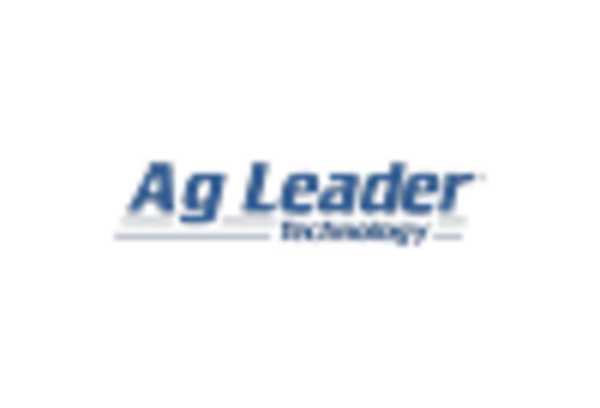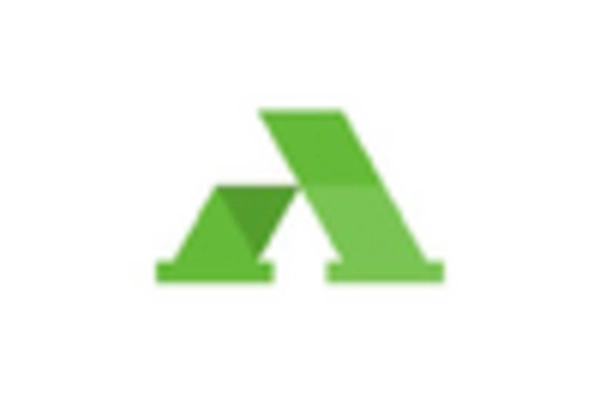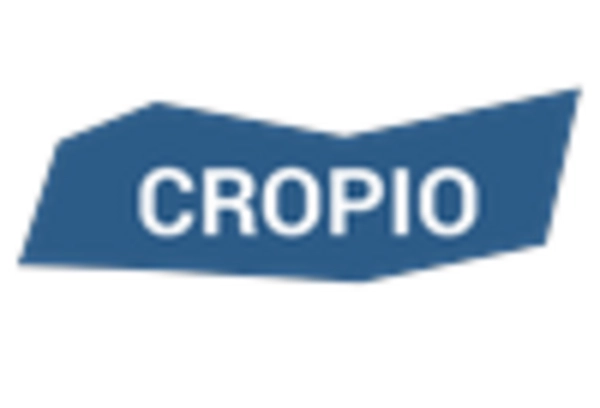Government Support and Subsidies
Government initiatives play a crucial role in shaping the farm management-software market. Various federal and state programs are designed to support the adoption of technology in agriculture, including financial incentives and subsidies for farmers who invest in software solutions. For instance, the USDA has allocated significant funding to promote precision agriculture technologies, which often include farm management software. This support not only reduces the financial burden on farmers but also encourages the integration of innovative solutions into their operations. As a result, the farm management-software market is likely to benefit from increased adoption driven by government backing, fostering a more technologically advanced agricultural sector.
Growing Focus on Operational Efficiency
The farm management-software market is witnessing a growing emphasis on operational efficiency among agricultural producers. As competition intensifies, farmers are compelled to streamline their operations to reduce costs and maximize output. Software solutions that offer features such as resource management, labor tracking, and financial planning are becoming increasingly popular. Reports indicate that farms utilizing management software can achieve up to a 20% reduction in operational costs. This drive for efficiency is likely to propel the adoption of farm management software, as producers seek to enhance their competitiveness in a rapidly evolving market. The ability to monitor and optimize various aspects of farm operations is a key factor influencing this trend.
Technological Advancements in Agriculture
Technological advancements are significantly influencing the farm management-software market. Innovations such as artificial intelligence, machine learning, and big data analytics are being integrated into software solutions, providing farmers with sophisticated tools for managing their operations. These technologies enable predictive analytics, which can forecast crop performance and market trends, thereby assisting farmers in making proactive decisions. The increasing availability of high-speed internet in rural areas further facilitates the adoption of these advanced technologies. As a result, the farm management-software market is likely to expand as more farmers embrace these innovations to enhance productivity and sustainability in their operations.
Increased Awareness of Sustainable Practices
The farm management-software market is also being driven by a heightened awareness of sustainable agricultural practices. Farmers are increasingly seeking software solutions that help them monitor and manage their environmental impact. Features such as carbon footprint tracking and resource optimization are becoming essential components of farm management software. Research indicates that approximately 60% of farmers are now prioritizing sustainability in their operations, which is likely to influence their choice of management software. This trend suggests that the farm management-software market will continue to evolve, with a growing emphasis on tools that support sustainable farming practices and contribute to environmental stewardship.
Rising Demand for Data-Driven Decision Making
The farm management-software market is experiencing a notable surge in demand for data-driven decision-making tools. Farmers are increasingly recognizing the value of data analytics in optimizing crop yields and resource allocation. According to recent statistics, approximately 70% of farmers in the US are now utilizing some form of data analytics to inform their agricultural practices. This trend is likely to continue as more farmers seek to enhance productivity and profitability through informed decisions. The integration of advanced analytics into farm management software enables users to monitor various parameters, such as soil health and weather patterns, thereby facilitating timely interventions. Consequently, the farm management-software market is poised for growth as it aligns with the evolving needs of modern agriculture.

















Leave a Comment